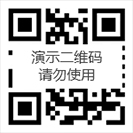Selection Guide for Radar Level Gauge: 5 Core Factors and Practical Techniques
As an important liquid level measurement device in the industrial field, the selection of radar level gauges directly affects measurement accuracy, stability, and service life. Starting from practical application scenarios and combining industry experience and technical specifications, this article summarizes the core points of selecting radar level gauges to help you efficiently match your needs.
一、 Clear measurement requirements: matching accuracy and functionality Accuracy level selection
1.Accuracy level selection
Trade level scenarios (such as energy metering and product handover): High precision models (0.5 or 1.0 level) should be selected to ensure data authority.18
Process control scenario: Select medium precision (1.5 or 2.5 levels) according to control requirements.
Ordinary monitoring scenario: Optional economical plug-in radar level gauge (4.0 level) 18.
2.Measurement range and caliber
Determine the measuring range based on the depth of the container and the range of liquid level changes to avoid "overusing" or "over limit failure".
If the pipeline flow rate is lower than 0.5m/s, the instrument diameter needs to be reduced to increase the flow rate and ensure measurement accuracy.
二、 Media characteristics: determine core parameters
1.Temperature and pressure tolerance
Guided wave radar: conventional type with temperature resistance ≤ 130 ℃, high-temperature type with temperature resistance ≤ 200 ℃; The maximum pressure resistance is 10 kilograms (special customization is not economical).
Low frequency horn mouth radar: temperature resistance up to 300 ℃, pressure resistance of 60 kg, suitable for high temperature and high pressure scenarios.
High frequency radar: temperature resistance generally ≤ 200 ℃, pressure resistance of 60 kg, high customization cost for high temperature 4
2.Corrosion and Material Selection
Conventional corrosive medium: Choose 316 stainless steel antenna material.
Strong corrosive media (such as hydrochloric acid, nitric acid): probes lined with polytetrafluoroethylene or sprayed with polytetrafluoroethylene should be used.
Special scenario: Low frequency/high-frequency rod radar should be preferred, but attention should be paid to the limitation of blind spots (0.5-0.7 meters) on small containers
3.Dielectric constant and signal reflection
Low dielectric constant medium (such as liquefied gas, gasoline): It is necessary to use a waveguide to enhance signal reflection.
High viscosity media (asphalt, residual oil): parabolic antenna is recommended for more reliable anti condensation design.
4.Interference between foam and steam
When the thickness of foam is ≤ 2cm, the influence is small; If it exceeds the limit, priority should be given to using low-frequency radar or guided wave radar for penetration measurement.
Under steam environment, guided wave radar and low-frequency radar have stronger anti-interference ability
三、 Environment and installation conditions: Ensure stable operation
1.Installation location and structure
Sealed container: The minimum connecting pipe for guided wave radar is DN40, for low-frequency radar it is DN50, and for high-frequency radar it must be ≥ DN100 (when there is stirring or steam) 6.
Avoid electromagnetic interference sources (motors, transformers) and reserve a safety distance of 25.
2.type adaptation
Antenna
type
Applicable
scenarios
Advantages and
Characteristics
Horn antenna
Open
tank, no waveguide scenario
Anti
condensation, wide beam coverage
parabolic antenna
High
temperature viscous medium (such as asphalt)
Anti
hanging material, narrow beam high precision
planar array antenna
Guided
wave tube floating roof tank
Beam
concentration and resistance to rough pipe walls
Rod/Cable Antenna
Solid
particles, powders, or highly corrosive liquids
Contact
measurement, strong signal penetration
四、 Security and Certification: Compliance Assurance
Explosion proof requirements: ATEX, FM, or UL certified model 25 must be selected for explosive environments such as chemical and petrochemical industries.Protection level: IP67/IP68 protection is recommended for outdoor or humid environments, and additional anti-corrosion treatment is required for corrosive gas environments
五、 Economy and Maintenance: Long term Cost Optimization
Initial cost: The price of customized high-temperature models for high-frequency radar may double, requiring a balance between demand and economy.Maintenance cycle: Regularly clean the antenna (avoid sharp tools), calibrate (at least once a year), prioritize modular design for easy maintenance
Conclusion
The selection of radar level gauges requires comprehensive technical parameters, environmental adaptation, and cost control. It is recommended to fully communicate with the supplier about the details of the operating conditions (such as tank structure, medium status, installation restrictions, etc.), and refer to the manufacturer's technical manual for debugging and calibration.2 8 Through scientific selection, the lifespan of equipment and measurement reliability can be significantly improved, providing support for intelligent production.Further reading
Guide for Installing Radar Level Gauge to Avoid Pits
The trend of intelligent upgrading of liquid level gauges in the Industry 4.0 era

